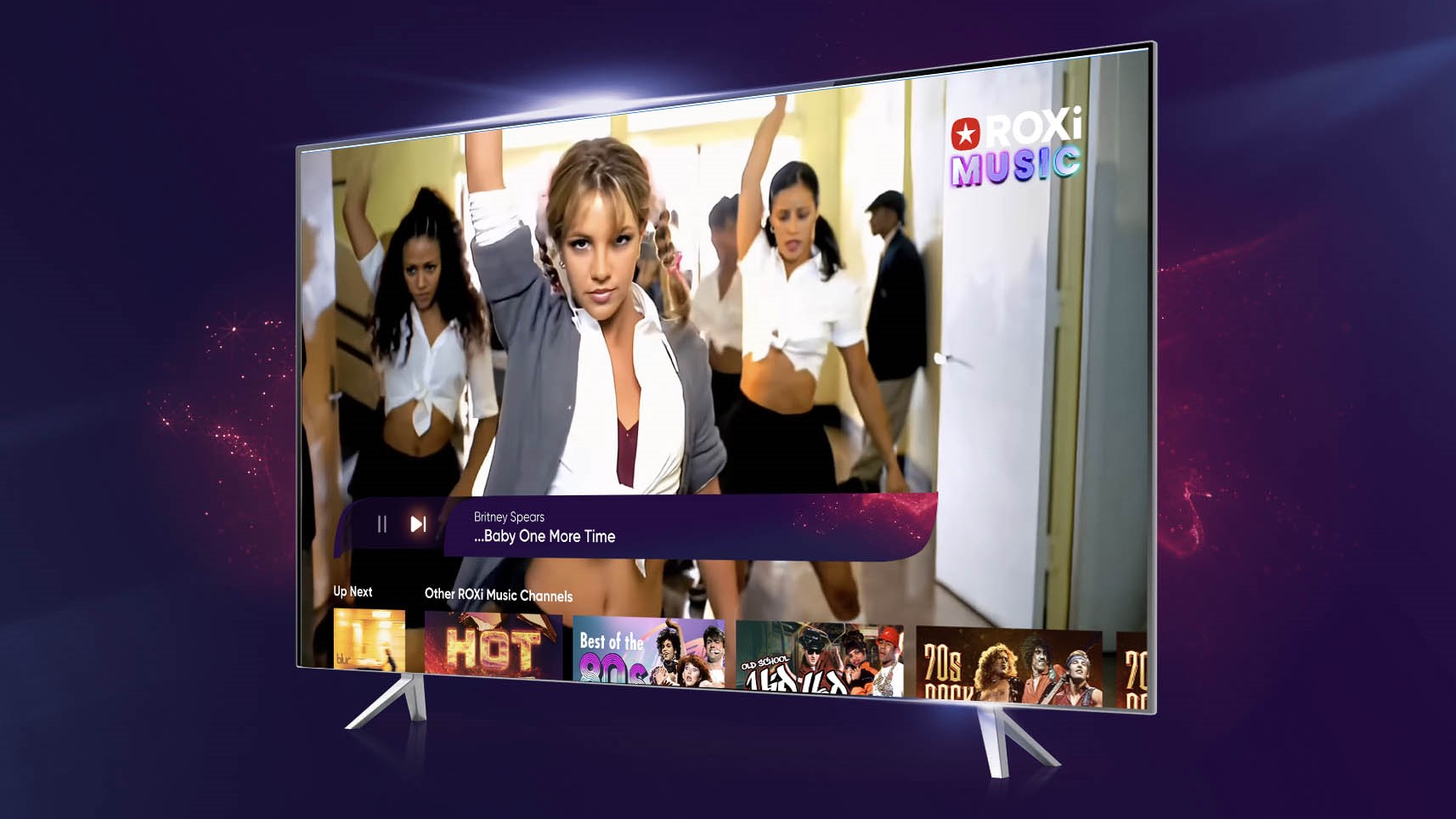Roxi, Sinclair Work To Broadcast Music Video Channels Using ATSC 3.0 (CES 2024)
Interactivity should spur adoption of NextGen TV

Roxi, the U.K. based music video service launching in the U.S. in the first quarter, is working with Sinclair to orchestrate three interactive music video channels using the new ATSC 3.0 technology early this year.
Sinclair is handling advertising sales and other business and technical aspects of the channel, including distributing it in markets where Sinclair does not own TV stations.

Broadcast viewers of the three Roxi channels — the Roxi Music Channel, the Roxi Music Video Karaoke Channel and the Roxi Music Games Channel — will be able to pause, like and skip individual songs without downloading an app.
Each NextGen TV channel can access Roxi’s catalog of 100 million real and virtual music videos.
Rob Lewis, CEO of Roxi, told Broadcasting+Cable that people are talking bout the long-term demise of linear broadcast TV because it lacks interactivity in an interactive age.
“We’ve proven that we can deliver fully interactive experiences very easily through broadcast without the requirement of an app store,” Lewis said. “It’s linear TV on steroids.”
Roxi and Sinclair will be demonstrating the broadcast version of Roxi at the ATSC 3.0 booth at CES 2024.
The smarter way to stay on top of broadcasting and cable industry. Sign up below
“Through our strategic partnership with Roxi, we’re building a better and more interactive broadcast television experience,” Sinclair VP and general manager, technology business development Skip Flenniken said. “We’re confident this partnership will help accelerate the adoption of NextGen TV by delivering entertainment features that consumers will increasingly come to demand on their televisions.”
Lewis said that these days if a viewer is listening to a channel and it’s playing a piece of music they don’t like, they can’t bear to wait three or four minutes for the next song to start. They’ll change the channels and won’t use the service again.
”Old-style TVs suffer from that problem quite dramatically, and that’s why this is so significant,” he said. “When people see this at a friend’s house, it can help to encourage them to demand a TV that has a NextGen turner.”
At this point, a relatively limited number of channels broadcast using ATSC 3.0. “We think this will have very high awareness and visibility in the U.S.,” Lewis said, noting that Sinclair and the ATSC 3.0 consortium “have a very strong strategic interest in the adoption of NextGen TV because ultimately their long-term goal is to switch off ATSC 1.0 so they can get all their spectrum back and have a huge number of channels with high definition.”
Station groups are also expecting new services enabled by NextGen TV to generate billions of dollars woth of incremental revenue.
Roxi’s financial adviser, Rockefeller Capital Management introduced Roxi to Sinclair, Lewis said.
Lewis recalled that the Sinclair executives “said to us, ‘What can you do with music using ATSC 3.0 that really changes the way people see broadcast television?’ ”
Roxi is using its SmartStream technology to enable the interactive, app-like features on a broadcast channel.
The technology downloads a mini-app whenever someone turns the channel to a Roxi channel. When the app downloads, the interactive features are enabled and controls appear on the screen.
When the viewer changes the channel, the app disappears until that channel is chosen again.
Roxi points to research showing that 77% of U.S. consumers thought that free interactive music TV channels, karaoke and music games, without the need for a subscription, would be an attractive feature they would want when selecting their next TV.
In addition to music, the technology can be used for newscasts, enabling viewers to skip stories they’re not interested in or jump to an item they want to see, Lewis said.
Jon has been business editor of Broadcasting+Cable since 2010. He focuses on revenue-generating activities, including advertising and distribution, as well as executive intrigue and merger and acquisition activity. Just about any story is fair game, if a dollar sign can make its way into the article. Before B+C, Jon covered the industry for TVWeek, Cable World, Electronic Media, Advertising Age and The New York Post. A native New Yorker, Jon is hiding in plain sight in the suburbs of Chicago.

